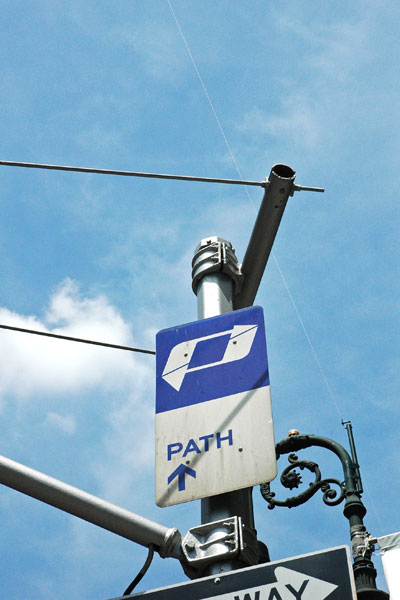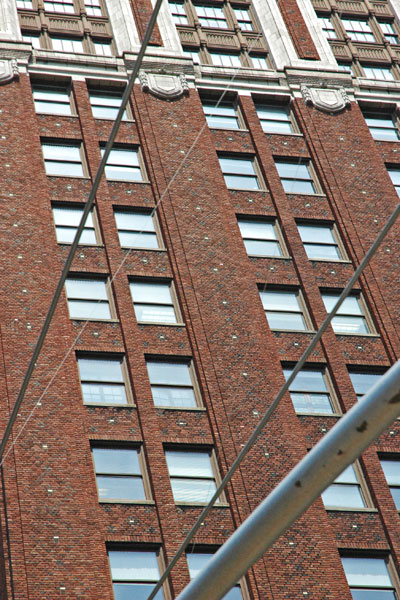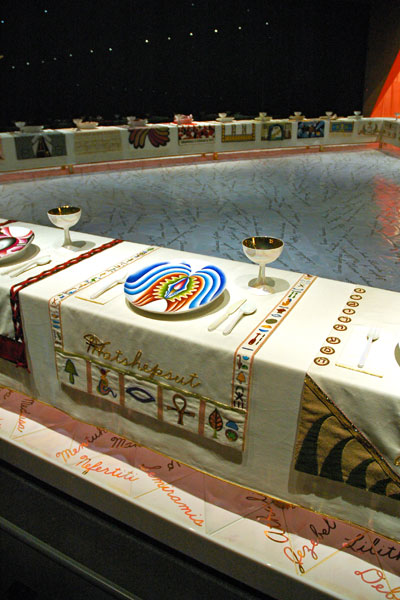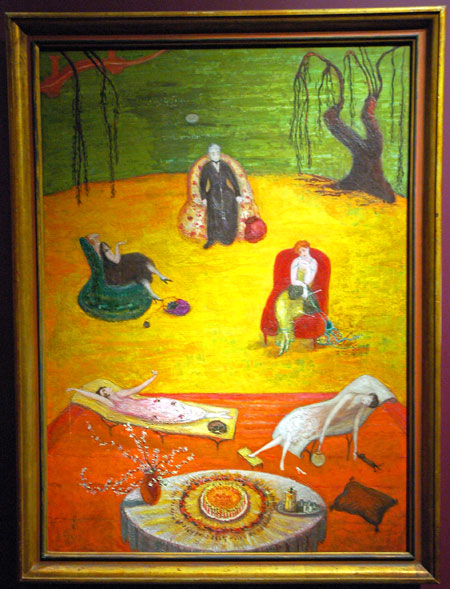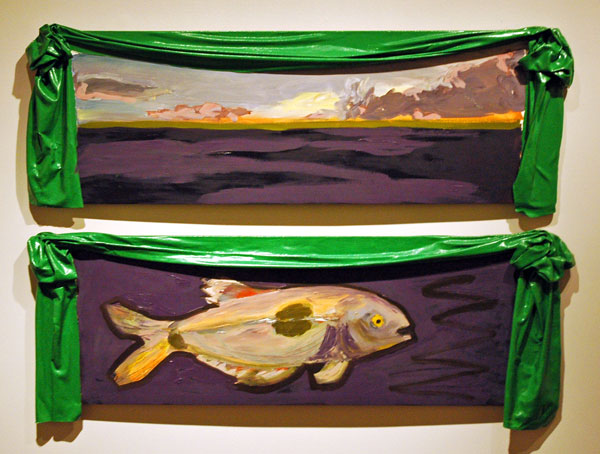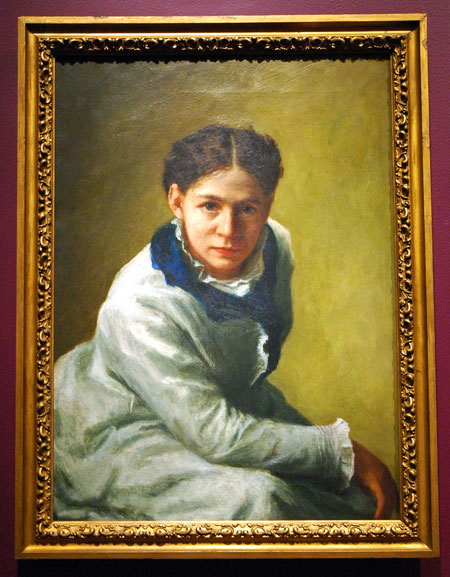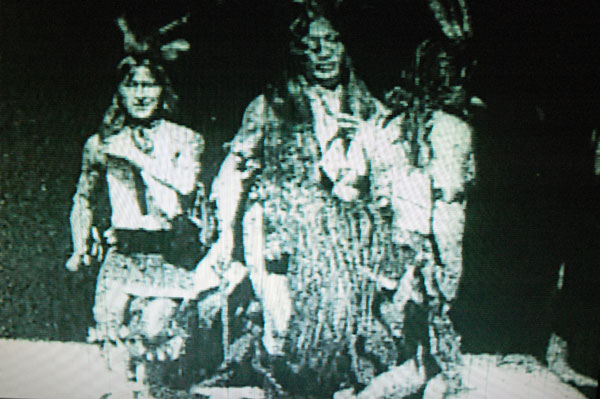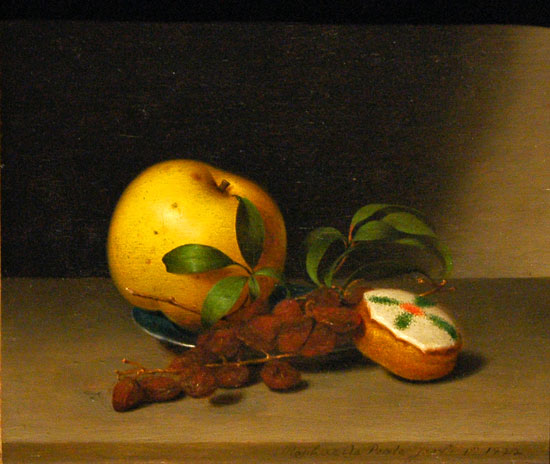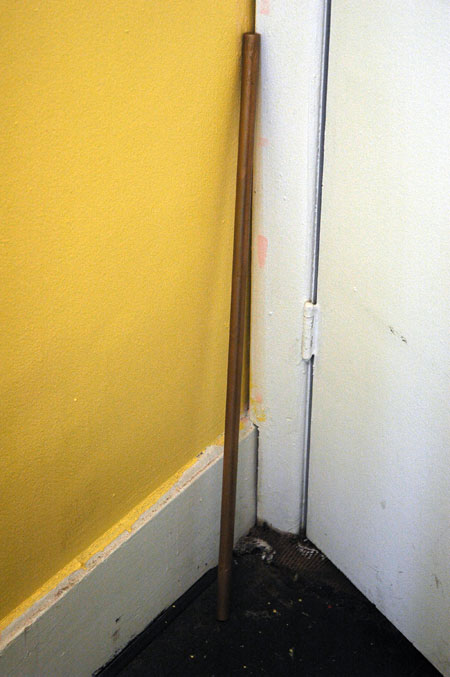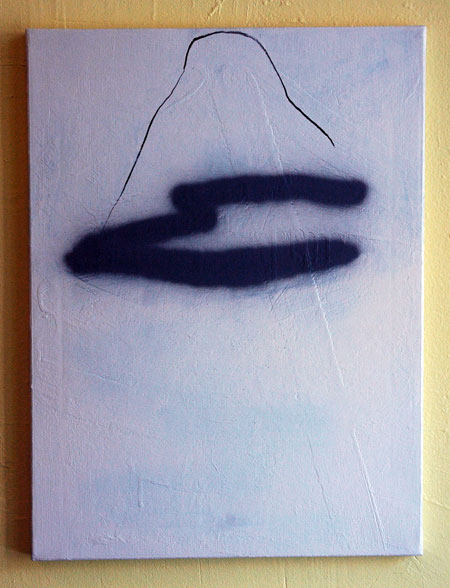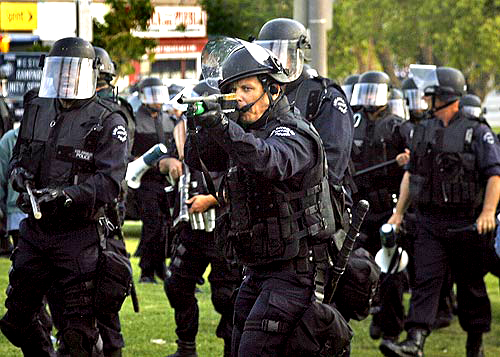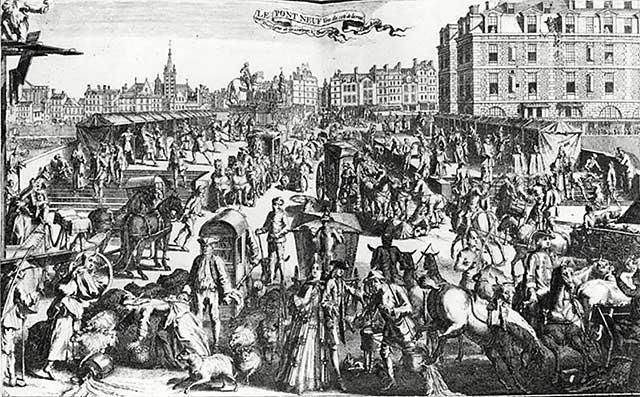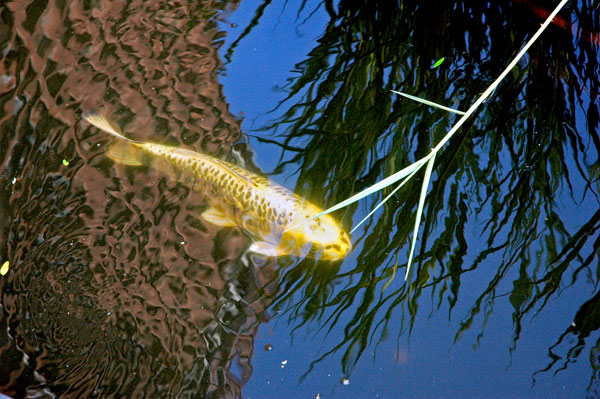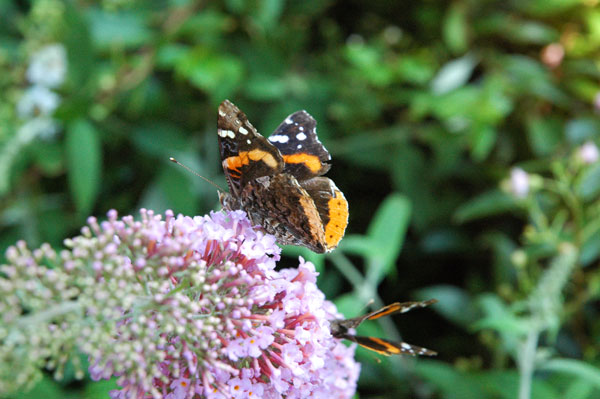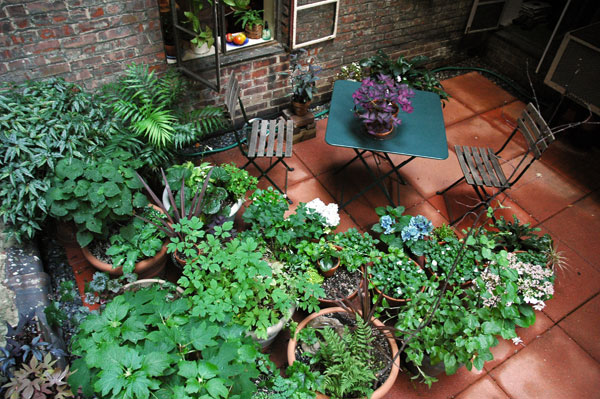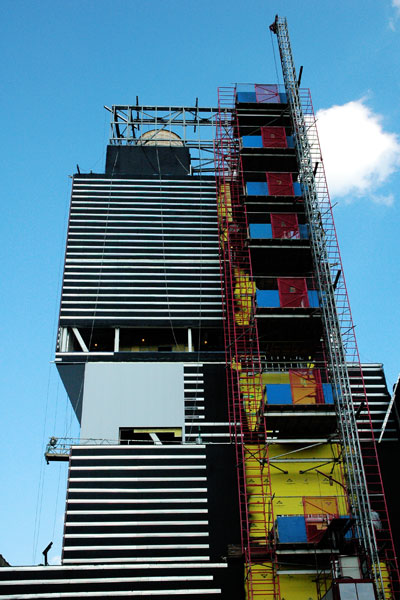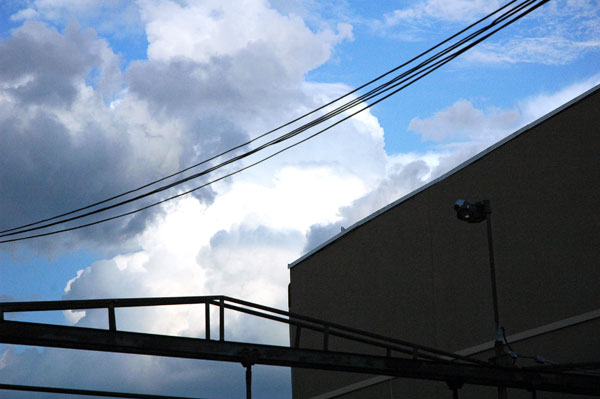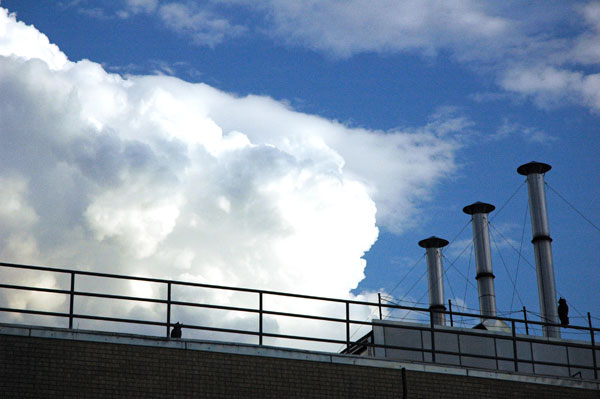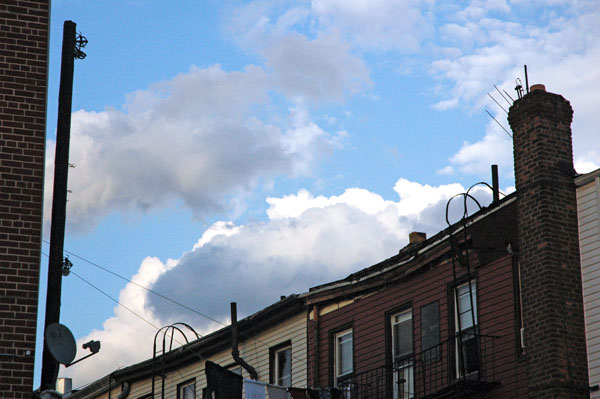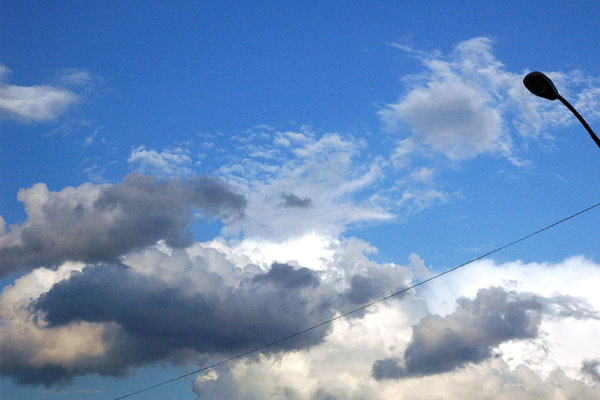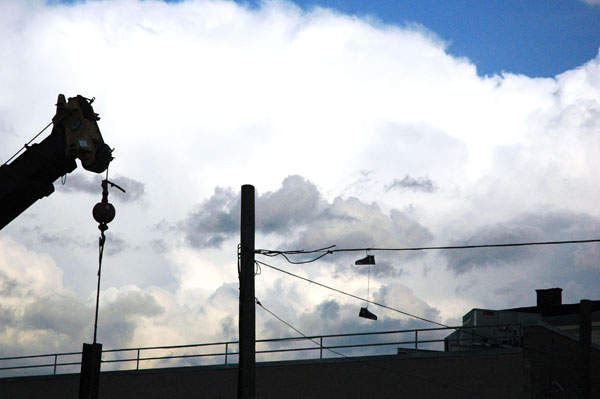BICYCLIST DOWNED BY THUG COP, ARRESTED, THEN UN-ARRESTED
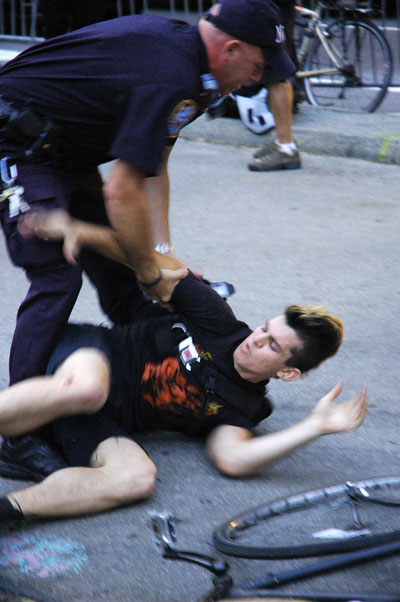
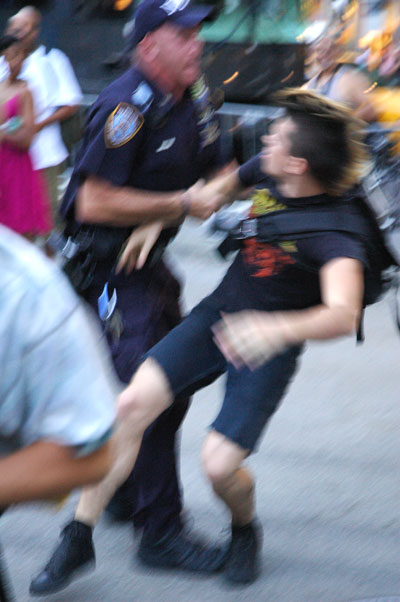
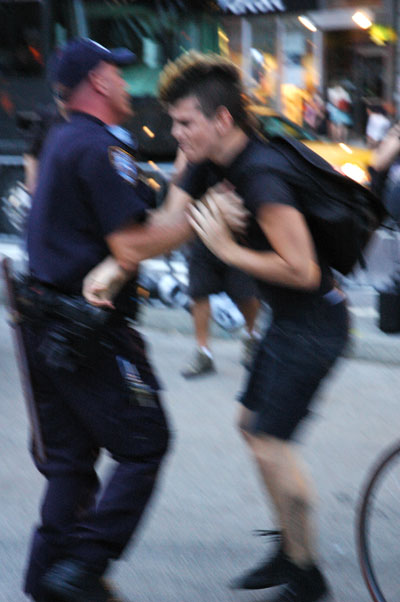
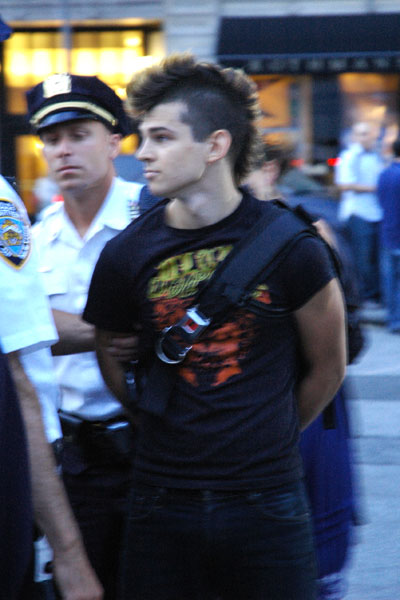
How much do you have to piss off a New York cop (unknowingly, in fact) before he assaults and arrests you?
When Joe Nerolla rode his bike over a large piece of fabric constructed to replicate an American flag (it was deliberately made as a rather casual, almost replica, with disorderly stars), an NYPD officer called to him to come over where he was. In the midst of the cacophony of a very animated and musical First Amendment rally last night the young bicyclist didn't hear the summons. Much later, when someone pointed out that Nerolla was a musician, the youth agreed that his hearing might no longer be what it once was.
I had been standing at the north end of Union Square since 6:30 and I had seen no uniformed police anywhere on the plaza throughout the events of the rally until about this moment, although we knew there were many in plainclothes (think New Jersey or Staten Island casual) and there would certainly be at least scores of cops hiding in various locations just outside the park.
Instead I saw scores of those notorious massed, unpermitted New York bicycles and a huge gathering of people numbering well over the maximum number (49) legally permitted to assemble without securing a permit. Hundreds of these people joined together in using still and video cameras in a public space for longer than 30 minutes (soon to become a violation of the law as well) and finally there was no cabaret license anywhere in sight but there was a lot of exuberant dancing.
At precisely 8:05 some of the bicyclists passed by where my artist friend Marisa Olson and I were talking. They seemed to be gathering over on the northeast corner. At that moment, thinking about what appeared to be an initial assembly of Critical Mass cyclists (this was the evening of their regular monthly run, and the police have been harassing them for years), I mentioned to Marisa that I hadn't actually seen any uniformed police yet. She turned around and pointed to two officers who were walking behind us just then. A moment later I saw another, but this one was running past us chasing after a bicyclist who it appeared might not have realized he was being pursued.
The cop caught up with the guy (who couldn't have been moving very fast), and threw him violently onto the asphalt. Other police immediately appeared as if from nowhere and their shaken and slightly-bleeding quarry was hustled over to the steel barricades which ring the north side of the park. He was then handcuffed and a phalanx of officers in both blue and (executive) white shirts hustled him over towards the shiniest and biggest black SUV I've ever seen, parked exactly where Greenmarket tomatoes and herbs had been arrayed until little more than an hour before. Everybody stopped just short of the truck however, while several legal observers spoke to the police. The crowd pressed around, almost everyone armed with a camera of some sort. Word had quickly circulated that the victim had been scooped up for riding his bike over an American flag.
Remarkably, after a few minutes of this limbo, tensions lowered somewhat as it became known that the arrestee had been un-arrested. The precise terminology, I believe, is "voided"; the arrest was voided. The two legal observers on the scene, Joel Kupferman and Antonia Cedrone, had done a superb job.
Later I learned that while under arrest the bicyclist, Nerolla, had been told by the police, "we're going to charge you with not addressing an officer". Yeah, sure. Instead however, it seems that at some point an unspecified "bicycle infraction", rather than a (non-existent) riding-your-bicycle-on-a-semblance-of-the-American-flag statute violation was substituted as the reason for Nerolla attracting the attention of the cop in the first place.
Whatever the original trigger for the arrest, apparently this time reason and the suasion of a large savvy crowd with cameras won out over one cop's overzealous flag-worship or an imagined wound to his prerogative. His superior officers (there were plenty on the scene) must have seen the senselessness of this particular arrest, but in the end it was more likely that Nerolla was released because "it was too much", in one legal observer's words, describing the circumstances (a very interested public) of the post-arrest environment.
In fact, in a move even the legal advisers seemed to find unorthodox or even weird, at the same time the police released their prisoner, they were concerned enough about the mood of the people assembled to ask the legal observers to address and calm the crowd. They declined; the crowd was capable of taking its own counsel.
All hail to the tekkie gods for both the internet and the camera!
The incident itself was a painfully-dramatic illustration of the importance of resisting rules which give the police arbitrary power. The problem is that an underpaid, undertrained and undisciplined police force will use it, arbitrarily - and prejudicially - not with a consideration of genuine threats to public safety, not with equity, not with any sense of proportion. Rules restricting assembly and speech will always be used against "the other".
The full force of the [law enforcers] will be used against protesters and those who look different from "the mainstream" as it is understood by the officer on the scene. The target of the police last night, that is, both the individual officer and the force dispatched, was not criminal conduct or even the notion of public order; the target was a bicyclist, an all-black costume, and a mohawk haircut.
Near 9 o'clock, when all of the excitement was over, and most of the bicyclists had left to group elsewhere, I started to walk out of the square, taking note of the numbers of police leaning on their two and three-wheel scooters lined along the curb on 17th Street. I could also see a line of idle police vans stretching up Broadway all the way to 18th Street. I passed a dozen or so skateboarders near the corner. They had returned to reclaim the area, and were seemingly oblivious to all of this, and to the First Amendment issues which had played out in the hours before, without a general resolution, on their familiar asphalt "turf".
Go to the galleries at SmugMug for over forty images of Joe Nerolla's arrest/un-arrest, and tons more of the First Amendment rally itself. Except for one image which was cropped, none has been adjusted, and they are all in the sequence in which they were taken.
